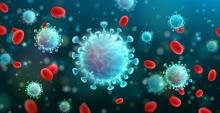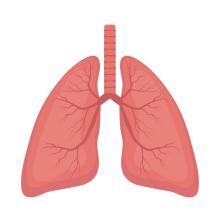חדשות המחקר
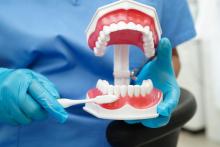
Daniel Moreinos: Tooth Resorption - Part 1: The evolvement, rationales and controversies of tooth resorption (Dent Traumatol .)
In 1966, Andreasen and Hjørting-Hansen were the first to describe a relationship between tooth resorption and dental trauma. However, Andreasen's original classification did not include other resorptive processes which have since been identified. Numerous articles have been published suggesting new terminology and definitions for tooth resorption. A uniform language with universally accepted terminology is crucial to eliminate the multiplicity of terms and definitions which only cause confusion within the profession. An electronic literature search was carried out in the PubMed database using the following keywords for articles published in English: "root resorption," "inflammatory root resorption," "replacement resorption," "cervical resorption," "trauma," "ankylosis," "surface resorption," and "internal resorption." The search also included textbooks and glossaries that may not have surfaced in the online search. This was done to identify articles related to tooth resorption and its etiology in dentistry. The aim of this review was to present the history that has led to the variety of terms and definitions for resorption.

Inass Kayyal-Tarabeia, Michael Blank, Keren Agay-Shay: "Residential greenness and site-specific cancer: A registry based cohort of 144,427 participants with a 21-years of follow-up, Tel-Aviv district, Israel" (Environ Res . )
Few longitudinal studies evaluated the beneficial associations between cumulative residential greenness and site-specific cancer. Our objective was to evaluate the associations between cumulative residential greenness exposure and site-specific cancer incidence (lung, bladder, breast, prostate, and skin cancer) within a registry-based cohort study.
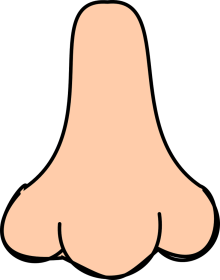
Keren Pevzner: Evolution of the Septal Extension Graft in Endonasal Rhinoplasty: Long-Term Efficacy and Reliability (Aesthet Surg J .)
Proper nasal tip projection and rotation have a strong impact on nasal aesthetics. Septal extension graft is one of the tools used to improve tip projection and rotation when performing rhinoplasty. This graft typically overlaps the existing caudal septum in the midline position, lengthening it and facilitating the repositioning of the tip. Describes the technical evolution of the septal extension graft in endonasal rhinoplasty and evaluate the reliability and long-term efficacy of the current technique.
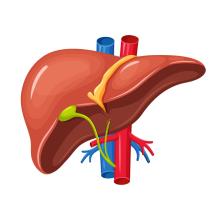
Michael Carmiel: Safety and Effectiveness Using 8 Weeks of Glecaprevir/Pibrentasvir in HCV-Infected Treatment-Naïve Patients with Compensated Cirrhosis: The CREST Study (Adv Ther .)
In clinical trials with hepatitis C virus-infected treatment-naïve (TN) patients with compensated cirrhosis (CC), glecaprevir/pibrentasvir (G/P), a fixed-dose, once-daily, pangenotypic regimen, has demonstrated sustained virologic response at posttreatment Week 12 (SVR12) > 95%. We evaluated the real-world safety and effectiveness of 8-week G/P therapy in TN patients with CC, including certain subgroups of interest.

Alon Barash: On the job training in the dissection room: from physical therapy graduates to junior anatomy instructors (BMC Med Educ . )
The training of near-peer (NP) teachers and junior faculty instructors received major attention as a possible solution for the shortage of experienced anatomy instructors in faculties of medicine and health professions. Several studies described the training of NP teachers and junior instructors (≤ 2 years of teaching experience) using various methods. However, few publications include On the Job Training (OJT), which enables reflection and performance evaluation and encourages professionals to cope with their blind spots. Previous publications describing OJT did not include formal observation of the NP teacher or junior instructor. Therefore, this study aimed to present a novel approach to OJT inclusion during prosection laboratories based on the Lewinian experiential model.
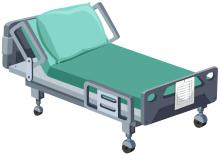
Sumit Mukherjee:A comparative analysis depicting the disease characteristics and phylogenetic signature of human cytomegalovirus infection in Human Immunodeficiency Virus 1 seropositive patients with end-organ retinitis and gastro-enteric diseases (Sci Re
During advanced HIV infection, Human Cytomegalovirus (HCMV) has been proven to produce devitalizing end-organ diseases (EOD). The interactive co-existence of HIV and HCMV has been reported by many researchers and has been suggested to be linked with a more aggressive disease state. This study has been designed to bring forward an assessment of the clinical risk factors capable of defining the conditions of HCMV induced retinitis and gastro-enteric diseases among HIV1 seropositive patients.
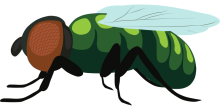
M Grinberg, R Levin, H Neuman, O Ziv, S Turjeman, Gila Gamliel, R Nosenko, O Koren: Antibiotics increase aggression behavior and aggression-related pheromones and receptors in Drosophila melanogaster (iScience . )
Aggression is a behavior common in most species; it is controlled by internal and external drivers, including hormones, environmental cues, and social interactions, and underlying pathways are understood in a broad range of species. To date, though, effects of gut microbiota on aggression in the context of gut-brain communication and social behavior have not been completely elucidated. We examine how manipulation of Drosophila melanogaster microbiota affects aggression as well as the pathways that underlie the behavior in this species.

Khalaf Kridin: Hidradenitis suppurativa: Evaluating activity patterns and predictors of recalcitrant course-A population-based study (Australas J Dermatol . )
Epidemiological evidence regarding the course and activity patterns of hidradenitis suppurativa (HS) is yet to be delineated. Identifies activity patterns of HS throughout the time axis and to outline predictors of recalcitrant disease course.

Tamar Leshem, Bat-Shachar Schnall, Maya Azrad, Avi Peretz: Incidence of biofilm formation among MRSA and MSSA clinical isolates from hospitalized patients in Israel (J Appl Microbiol . )
Assesses the biofilm-producing capacities of S. aureus strains isolated from hospitalized patients in Israel.
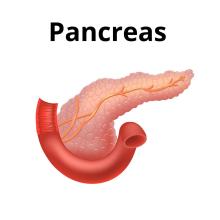
Yara Hamshawi, Assaf Malka, Ron Piran: P systems with protein rules ( Journal of the Franklin Institute)
Membrane computing or P-systems is a subfield of natural computing, which models living systems with mathematical tools. In classical membrane-computing, cells or organs are surrounded by a simple membrane and computational events take place in either side of the membrane. We have developed a new conceptual tool to better fit P-systems to higher-order organisms, which rely on the actual membrane structure of the cell and on the biochemical reactions (rules), which take place on the membrane of different organs in our body. To demonstrate the power of this new concept, we modeled the process of maintaining normoglycemia in healthy individuals as well as in type-I and type-II diabetes patients. The main challenge was to prioritize the insulin-producing β-cells over other organs, i.e., once glucose has entered the body, it must first enter specifically into pancreatic β-cells in order to release the hormone Insulin. However, using classical membrane computing, we could not implement this hierarchy. Therefore, we chose to utilize the membrane actual physiology and add its properties to the current definitions of membrane computing. In particular, we use enzymes and protein-transporters (as well as channels) to apply algebraic rules. In addition, we show that the defined systems are universal, by simulating register machines. Thus, allowing deterministic manner operations in a non-deterministic system by giving membrane-specific rules. To our gratification, we succeeded to adequately describe the process of glucose homeostasis in health and disease while bringing the science of membrane-computing closer to the natural world.

Erez Kachel, Liza Grosman-Rimon, Shachar Yehezkeel, Leonid Sternik, Ehud Raanani: The Modified Sternoplasty: A Novel Surgical Technique for Treating Mediastinitis (Plast Reconstr Surg Glob Open . )
Deep sternal wound infection (DSWI) is one of the most complex and devastating complications post cardiac surgery. We present here the modified sternoplasty, a novel surgical technique for treating DSWI post cardiac surgery.

Michal Carmiel Haggai, Inshirah Sgayer, Jacob Bornstein, Marwan Odeh, Lior Lowenstein, Maya Frank Wolf: Liver stiffness and steatosis in preeclampsia as shown by transient elastography - a prospective cohort study (Am J Obstet Gynecol . )
Preeclampsia is a multisystem disorder and the leading cause of severe morbidity and death in pregnancy. Liver involvement in preeclampsia ranges from elevated liver enzyme levels to hepatic infarction or rupture. Endothelial dysfunction leads to changes in blood flow and congestion and may be involved in the pathophysiology of preeclampsia. Changes in splanchnic blood flow and portal congestion can result in altered liver stiffness. Transient elastography is a non-invasive ultrasound-based technique that measures organ stiffness as well as steatosis, therefore widely used in clinical hepatology. Previous studies reported elevated liver stiffness and liver steatosis, as measured by transient elastography, in women with preeclampsia. This study followed changes in liver stiffness and steatosis, as measured by transient elastography, from the antepartum period to one-week postpartum among women with preeclampsia versus healthy controls; and evaluated the association of preeclampsia severity with transient elastography results.

Dally-Gottfried Orna: Early exposures and inherent factors in premature newborns are associated with type 1 diabetes (Pediatr Res .)
Pathophysiology of type 1 diabetes (T1D) involves immune responses that may be associated with early exposure to environmental factors among preterm newborns. The aim of this work was to evaluate for association between T1D and maternal, nutritional, and medical exposures during the neonatal period among premature newborns.



